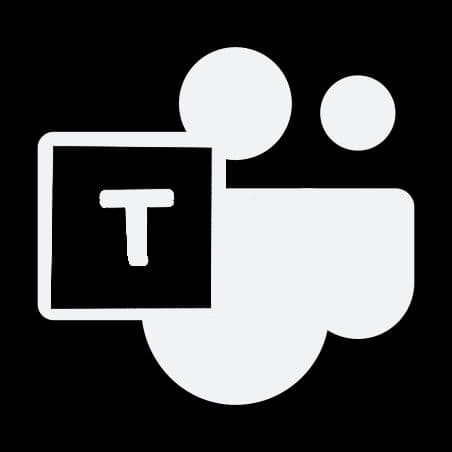Learn how to create a truly modern digital workplace, transforming employees' daily activities while driving employee engagement and employee productivity. The perfect intranet - just follow the recipe!
I’ve been working in the tech industry for over 20 years and dedicated to building successful intranets for the past 10. Over all these years, I’ve faced the same set of recurring issues with pretty much every company:
- They are not happy with their existing intranet.
- Employees are simply not engaged with it.
Employee engagement, and intranet adoption are major concerns for corporate communications departments as they ultimately either make or break the creative potential and productivity of their workforce. It is a well-known fact that employees feel empowered to do a better job when provided with powerful and modern tools, maximizing their engagement and satisfaction.
Years ago, corporations were merely physical places, but today’s distributed and hyper-connected world imposes new requirements on the workplace. Work happens anywhere, at any time, and employees need to communicate and collaborate, sharing information across the organization, while on-the-go and on multi-devices.
Baking the Perfect Digital Workplace
Although every company is unique in its processes and requirements, there is typically an underlying method - let’s call it a recipe - we can all follow when planning, building and deploying a company’s future digital workplace, keeping in mind that the key success factor resides in bringing people together towards a common vision. Let’s start cooking!
Ingredients
- A detailed list of employee requirements.
- An aligned management team to the corporate intranet vision.
- Best-in class technology toolbox.
- A strong brand identity.
Directions
#1 Understand your employee’s needs.

If the intranet is meant to satiate the people, then we must know our users and deeply understand their needs and expectations. Start with an aligned management team and drive an initial set of tasks that consolidate a list of major unaddressed or poorly implemented user requirements. Be sure to whisk in these prospective tasks:
- Define the list of key project stakeholders; these will globally represent your user base, so select wisely.
- Appoint a project owner (typically a communications, marketing or IT manager) to gather requirements from the stakeholders.
Refine the list of requirements, not to be based on features, but in the processes you want to address. This is key to creating a solution that is intuitive and that addresses real problems. Write down requirements in the form "As a [user role] I need to [task] in order to [detailed task]" – this helps define requirements as a list of employee’s needs.
#2 Set and share the vision.

Once you’ve gathered your first ingredient – a strong list of requirements – the next step is setting a global vision for your intranet, as it will be crucial for baking an efficient strategy.
The intranet vision provides a clear, global definition of the road ahead. But most importantly, the vision must be shared by management and key stakeholders and employee engagement is critical in implementing it. During this step, gently fold in the following:
- Create the business vision. This includes the strategic goals, strategic internal communication for the intranet, editorial style and high-level technical recommendations. Vision is a long-term goal, so make sure it is future proof.
- Set attainable limits. Dreaming is easy, and a lot of companies fall in the trap of aiming for the stars. A strong vision must also be implementable, cost-effective, and deliverable in an optimal timeframe. The 80/20 rule also applies to building an intranet. Pragmatically aim for 80% of your goals; the remaining 20% may cost you an extra 80%.
- Involve top management and key stakeholders. This is a crucial part of this recipe and, if not correctly executed, can jeopardize the success of the final result. All key parts, from all areas in your organization, must be involved in this process and committed to implementing the shared vision, from IT to HR or Marketing. This will ensure that, along the development phase, everyone will be working towards the same goal.
#3 Select the best technical toolbox.

Now that you have mixed the first ingredients, it’s time to season your intranet by selecting the best technology platform for your organization.
Feel free to generously sprinkle the solution with the tools employees need to do their jobs while using the corporate intranet, and although these may vary depending on the company size and industry, some categories are common to most intranet scenarios:
- Communication (Corporate/departmental/team News, Blogs, Notifications).
- Collaboration (Teams, Communities, Wikis).
- Productivity (Business Applications, Messaging, Calendars, Documents, Media/Video, other tools).
- Links (Stocks, Weather, Cafeteria, other resources).
- People (Employee directory, Rich individual profile, Organizational chart).
- Always on-the-go (Support for Desktop/Laptop, Tablet, Smart phone).
Several factors can influence the decision of selecting the technical toolbox, but here are a few you should consider:
Integrate with existing systems. With a myriad of systems in place, companies are usually complicated worlds to live in, with employees juggling multiple balls at a time. Your co-workers are already checking email, sharing files, using internal communication tools. Make sure to select a platform that seamlessly integrates with your existing systems. For companies relying on Windows, selecting Office 365 is the natural choice and best option, ensuring a hassle-free integration path.
Create emotional connections with effective use of corporate branding. The corporate brand reflects your company’s values, principles, and mission, and it is key to employee engagement and team building, as well as for engaging employees as strong brand ambassadors. When selecting the intranet’s platform, make sure it supports the ability to easily reflect the company’s brand, by incorporating elements like the company’s color palette, typography, logo rules or navigation rules. Simple color changes may not be sufficient, as employees tend to refer to the company’s online presence as the reference. I built my business on branding – BindTuning Themes for SharePoint are a leading resource for companies that know the power a branding and visual consistency can do for employee engagement and employee productivity.
Select tools that look good. A good UI/UX (user interface/user experience) not only looks good, but also provides you options to address key experience factors like rich and structured navigation options, rich visual elements – so you can properly structure content areas –, and also improved search functionality. At BindTuning, we not only give users a modern digital user interface, but the tools themselves are easy to use, requiring little to no skills and definitely no coding.
Go for quick and impactful wins. Gone are the days when companies would spend months, even more than a year, developing the company’s intranet to later discover, maybe in less than a year’s time, the intranet was already outdated, and a new version had to be implemented. In an agile world, companies must focus on delivering more and faster, so customizable low code solutions tend to be a smart choice. BindTuning templates enable our clients to prototype a modern digital workplace in less than 10 minutes and with our subscription plans, keep their sites fresh and updated.
Plan for the future. Select tools with a clear and continued update roadmap. Underlying platforms, like for example Office 365, have now very short release cycles, with new releases coming out every few weeks. Your toolbox must be up to this challenge. Select tools and companies that are agile responding to change, and that have proved to be innovative in the marketplace. Make your intranet future-proof!
Bake and Serve

As you are "baking" your new intranet experience, it is key to continuously communicate these improvements to your employee base. Past negative experiences may have left your colleagues feeling burned on new intranet experiences, so getting everyone involved by communicating effectively, is crucial for employee productivity.
Communicate the launch globally to the company, and make sure to provide users with tools to comment on pages and functionality, giving them the opportunity to also suggest minor improvements. An intranet is never finalized! Rather it is a work in progress, a living part of your company, that grows and evolves as your business imposes new requirements. Be open to change.
This is a recipe you should review continuously. You want your modern digital workplace to be a useful tool for years to come, so keeping it updated, not only with fresh content but also with new, exciting and useful features will make it stick in time.
Oh, and there is no single, infallible recipe to building the perfect intranet ;) I am sure you will add your own flavor, seasonings to make it tasty for your business! Bon Appetit!










